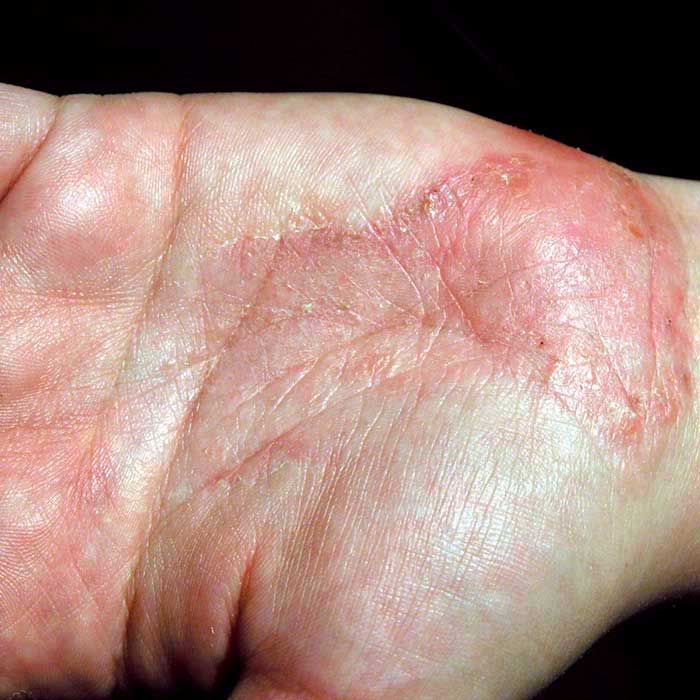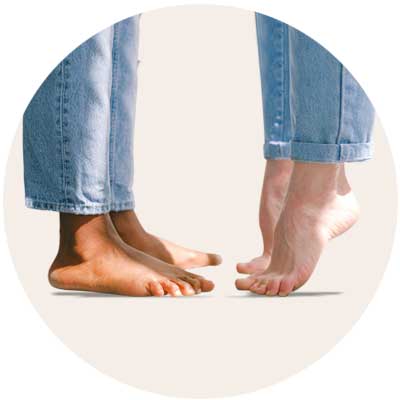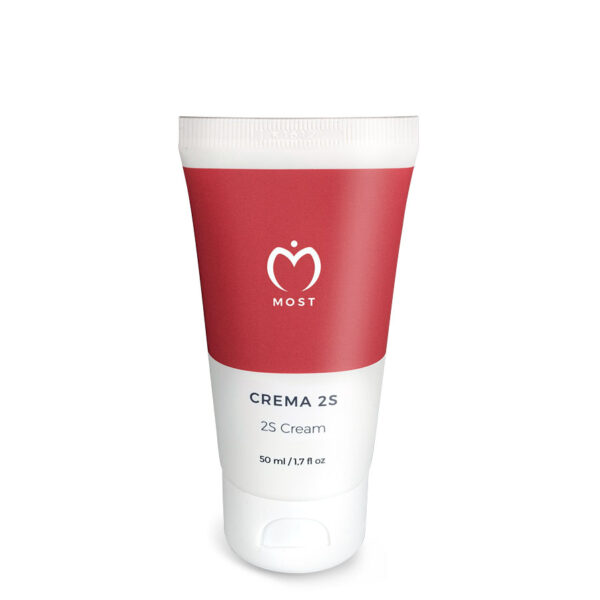What is dyshidrotic eczema on the hands?
Dyshidrotic eczema, or dyshidrosis, can be either reactive or inflammatory, and usually appears on the palms. It causes itchy skin and the formation of small, fluid-filled blisters. Due to its location and name, dyshidrosis can sometimes be confused for a sweating condition. Sweating, however, is not a cause of dyshidrotic eczema.
What does dyshidrotic eczema on the hands look like?
Dyshidrotic eczema appears on the palms of the hands. Itchy, fluid-filled blisters or pustules form under the skin causing considerable discomfort. The condition is often seasonal, worsening or reappearing in the spring and fall months.
What are the causes of dyshidrotic eczema?
Dyshidrotic eczema is usually a reactive disorder whereby many white blood cells (leukocytes) migrate from the blood into the skin. Once present in the skin, these cells form the blisters or pustules that characterize dyshidrotic eczema. Dyshidrosis is in the same family as psoriasis or atopic dermatitis. These skin diseases are auto-inflammatory and have a chronic relapsing course. Therefore, if an individual is predisposed to the condition, it will reoccur many times throughout their life. As with psoriasis or atopic dermatitis, there is no one definite cause of dyshidrotic eczema,
but some common triggers include:
- stress
- seasonal changes
- contact with irritants
- secondary infections from the streptococcal bacterial family
- secondary infections from the dermatophyte bacterial family
How to treat dyshidrotic eczema on the hands
It is often mistaken for a form of Hypersweatness, but since it is a form of Psoriasis or Atopic Dermatitis, the same remedies, i.e. reducing agents, must be used. It is important to consult your dermatologist to confirm the diagnosis and receive the most suitable treatment.
To soothe skin manifestations related to dyshidrosis:
- Apply Dermictiol Cream every evening and massage until completely absorbed.
- In the morning, apply PEG Balm and massage until absorbed.
If the skin is characterised by scales or hyperkeratosis (a particular skin alteration consisting in its thickening):
- Apply 2S Cream in the evening and massage until completely absorbed
- In the morning, apply PEG Balm and massage until absorbed.

To keep the affected area clean, dry wash with a potassium permanganate solution. When the eczema has regressed, resume washing with the mild, non-foaming Eudermic Cleansing Base.
To avoid irritating the skin during an eruption of dyshidrotic eczema, the hands should not be wet or washed. Water and contact with soaps can be stressors that aggravate symptoms. Use nitrile gloves whenever in contact with water or potentially irritating substances, such as powders and detergents.
















